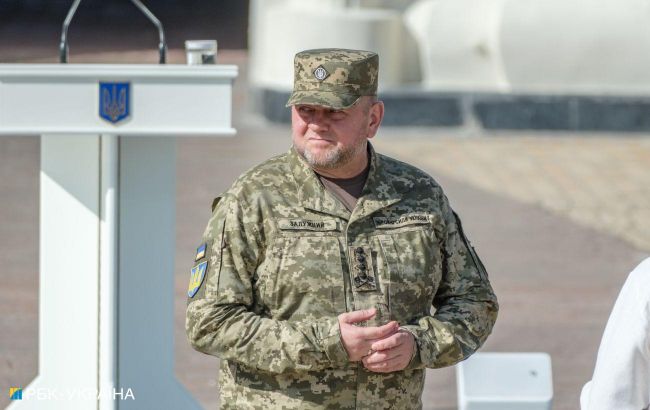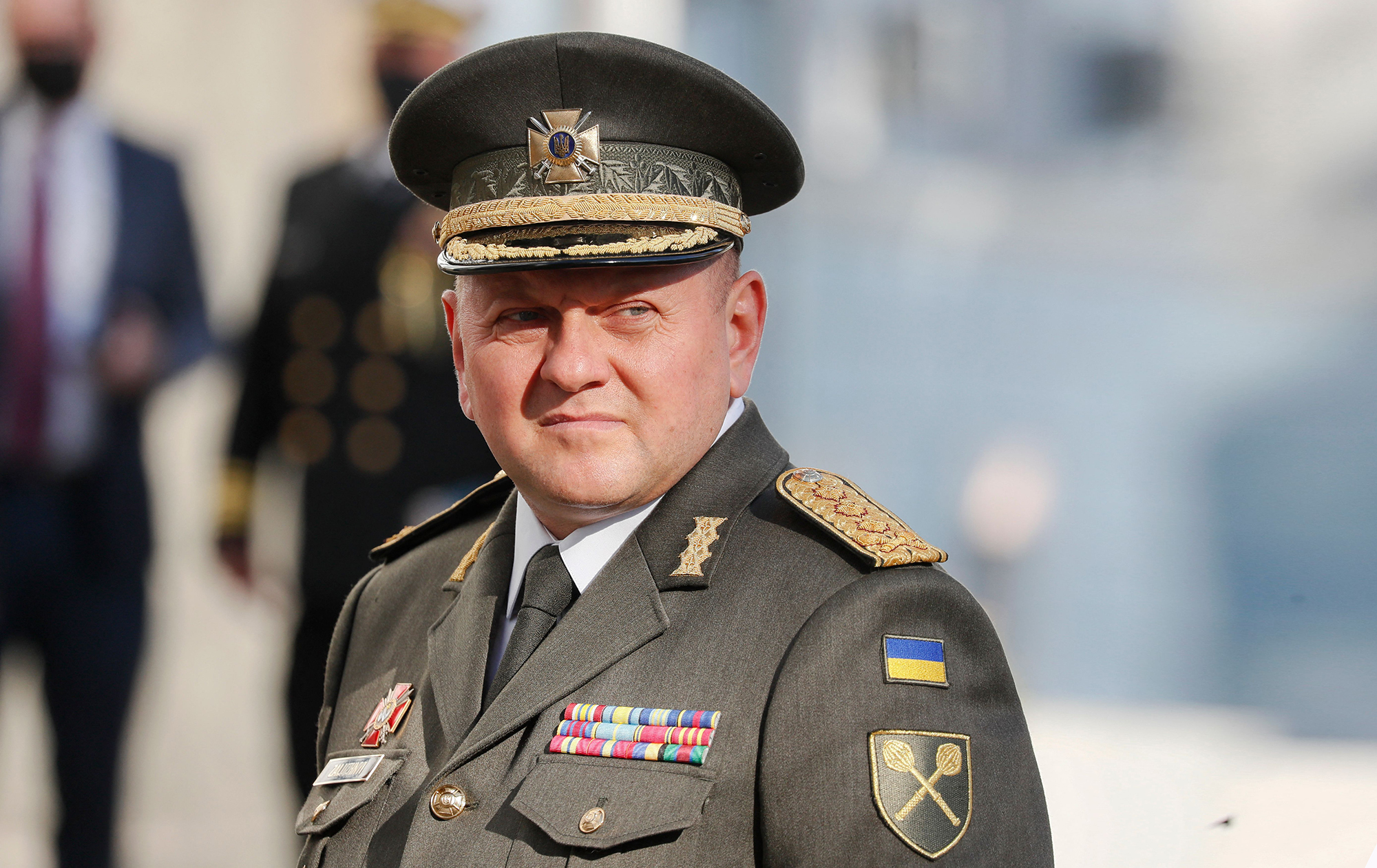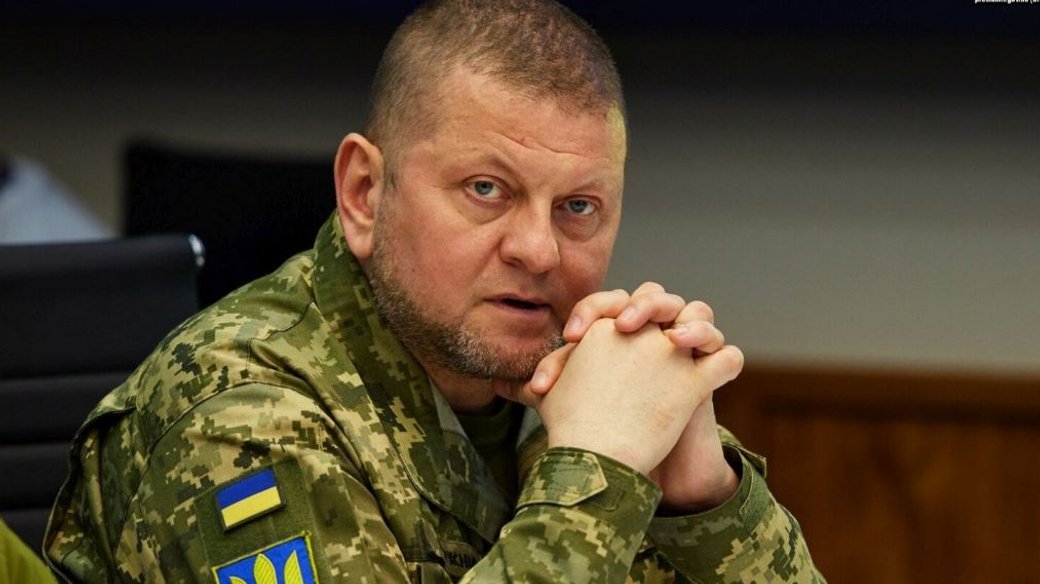What is trench warfare and its risks for Ukraine: Analysis of Zaluzhnyi's article
 Commander-in-Chief of the Armed Forces of Ukraine Valerii Zaluzhnyi (Vitalii Nosach, RBC-Ukraine)
Commander-in-Chief of the Armed Forces of Ukraine Valerii Zaluzhnyi (Vitalii Nosach, RBC-Ukraine)
The Ukrainian military leadership has in fact acknowledged the miscalculations in the summer-fall counteroffensive campaign. Commander-in-Chief of the Armed Forces of Ukraine Valerii Zaluzhnyi discussed the mistakes, risks of trench warfare, and what is needed to achieve victory over Russia.
RBC-Ukraine analyzes Zaluzhnyi's messages, providing military experts' comments.
To prepare the story, Zaluzhnyi's interview and article for The Economist were used, as well as exclusive comments from experts Oleksii Hetman and Oleksandr Musiienko for RBC-Ukraine.
Zaluzhnyi lowered Russia's pain threshold. But does it exist at all?
Over five months of the counteroffensive, Ukrainian forces have advanced only 17 kilometers. Assessing the campaign publicly for the first time, Zaluzhnyi states that the battlefield in Ukraine resembles the First World War. Back then, both sides reached a similar technological level, which ultimately led them into a stupor. Ukraine needs a sharp technological leap to get out of this deadlock.
"There will most likely be no deep and beautiful breakthrough," the general notes.
The way the counteroffensive is going has shattered Zaluzhnyi's hopes of stopping Russia by bleeding its forces. "That was my mistake. Russia has lost at least 150,000 dead. In any other country, such casualties would have stopped the war," he added.
His words have two interesting points. Firstly, Ukraine's military-political leadership did not previously speak about the counteroffensive in such words, even though it became clear in the summer that many things had gone wrong. Zaluzhnyi has taken a bold step, demonstrating that there is currently a reassessment, a focus on rectifying mistakes, and an analysis of what needs to be changed.
Secondly, he mentions Russian losses of 150,000, while according to the General Staff, no fewer than 300,000 occupiers have been eliminated since the start of the invasion. However, this discrepancy is understandable, as Western partners prefer to operate with 100% confirmed information, according to military expert Oleksii Hetman.
"I don't know how they count the dead, but it seems to me that the chief of the army deliberately cites a figure half as small to avoid unnecessary questions. And if people like Zaluzhnyi admit to making mistakes, that's good. There is no one who doesn't make mistakes, especially in war," he said in an interview with RBC-Ukraine.
It does not mean that Russia does not have a pain threshold at all when it comes to losses in live forces. However, their criticality is determined not only by the number of casualties but also by those who will die in the future. A significant portion of the 300,000 figure includes prisoners, mobilized from the occupied Donbas and depressed regions. Currently, more reserves are being mobilized, the mobilization will affect large cities, losses will increase, and soon Russian society will not be able to ignore them.

Photo: Zaluzhnyi acknowledged his mistake, hoping that losses of 150,000 people would stop Russia (Getty Images)
The head of the Сenter of Military Law Researches, Oleksandr Musiienko, assures that Russia has a pain threshold. He recalls a vivid episode from the First World War when soldiers shot their commanders and fled from the front during the revolution.
"In Russian history, there was such a stage, and it has been well studied. They are trying to postpone it, including by recruiting prisoners. But it is very difficult to say exactly how many more Russians must die. And whoever says it will make a mistake. Making predictions about when a social explosion and revolution will happen in Russia is an ungrateful task," he explained.
The counteroffensive did not succeed, but it did not fail either
For the first time, Ukrainian command is not only saying that the counteroffensive is not going as planned but also discussing specific miscalculations.
"If you look at NATO’s text books and at the maths which we did, four months should have been enough time for us to have reached Crimea, to have fought in Crimea, to return from Crimea, and to have gone back in and out again,” General Zaluzhnyi says.
Instead, Ukrainian forces got stuck in minefields, and Western equipment was pummelled by Russian artillery and drones. Inexperienced brigades, despite being equipped with new weapons, immediately faced problems. When changing commanders did not help, Zaluzhnyi opened a book by Soviet major-general P.S. Smirnov called "Breaching Fortified Defence Lines." It has an analysis of battles in World War I, and Zaluzhnyi realized that a similar technological level had put both Ukrainian and Russian forces in a stupor.
When Zaluzhnyi went to the front line, he saw burning Russian columns in Avdiivka, as FPV drones targeted fleeing enemies, but the same picture unfolded when Ukrainian troops tried to advance. The simple fact is that we see everything the enemy is doing and they see everything we are doing.
"From a military point of view, the chief of the general staff explains what went wrong and what was not considered during planning. He cannot avoid talking about it because this topic is of interest to both Western partners and Ukrainians. It's important for allies to understand our accountability and transparency in decision-making. When Zaluzhnyi says that, it should be taken calmly, even if it's a bitter truth for some. Mistakes happen in any war, including on our side. And unfortunately, there will be more," Oleksandr Musiienko said.
Zaluzhnyi's words, to some extent, may be seen as an acknowledgment that the widely announced counteroffensive has been a failure. But it's not true, Oleksii Hetman believes.
"The counteroffensive did not follow the plan for many reasons, especially because of powerful Russian fortifications and dense mining. British intelligence and Western analysts already stated that the allies underestimated Russia, preventing us from advancing further. Can it be considered a failure? On a large scale, no. Our forces did not achieve their goals, but they made some progress and gained valuable experience," he noted.
Importantly, Zaluzhnyi's opinions have been voiced primarily in Western media. Obviously, it is mostly aimed at allies in the hope of obtaining support to defeat Russia.
How to get out of a deadlock? Ukraine needs more high-tech weaponry
Ukraine can only escape a deadlock with a technological edge over Russia. Zaluzhnyi argues that something like gunpowder, an invention that still affects wars, is needed. This time, the decisive factor will not be a specific invention but a combination of innovations in drones, electronic warfare, anti-artillery capabilities, and equipment for demining, including new robotic solutions.
"We need to use the power inherent in new technologies," the general stated.
The Economist notes that allies are cautious about supplying advanced technologies and more powerful weapons. At the beginning of the Russian invasion, U.S. President Joe Biden's goal was to ensure that Ukraine would not be defeated and that America would not be drawn into a confrontation with Russia. This means that weapons should be sufficient to support Ukraine, but not for victory.

Photo: Zaluzhnyi believes that defeating Russia is only possible through a technological advantage (Getty Images)
Oleksandr Musiienko is not sure that this point of view dominates in partner countries. According to him, the West can still react to Zaluzhnyi's messages and change its approach.
"I even have some hope for the U.S. elections, however, that may sound paradoxical. On the one hand, Republicans demand more accountability, on the other hand, more assistance, accusing the Joe Biden administration of indecision. Perhaps some deliveries will be expedited to activate events on the front lines. We will see in the near future. Ukraine has made the request, and much has been done to convey that to the partners," he noted in a conversation with RBC-Ukraine.
By delaying the supply of long-range missile systems and tanks, Western countries allowed Russia to strengthen its defense after the rapid advances of the Armed Forces of Ukraine in the Kharkiv and Kherson regions in the fall of 2022. Many systems were relevant for Ukraine last year but only arrived this year.
Therefore, Zaluzhnyi warns against exaggerated expectations regarding F-16 fighters expected in the first half of 2024. They may be less useful, partially because the adversary has improved its air defense systems. The experimental S-400 system can target aircraft even beyond the city of Dnipro.
In fact, for the first time, it is a top officer himself, not analysts, who says that F-16 fighters will not ensure a swift victory over Russia, and this is logical given the quantity declared for 2024-2025. At the moment, about 60 units of F-16 have been confirmed, and overall, allies could provide over a hundred. With such a schedule, aviation will not provide a breakthrough. The ability to strike at Russian rear areas will increase, but it will not be enough to cover advancing units.
Overall, there is no magical weapon, and the same overheated expectations about tanks and ATACMS missiles have not been met in many ways. The recipe for victory over Russia lies not only in the quality but also in the quantity of weapons.
Oleksii Hetman cites the example of operation Desert Storm in 1991. Today, Russia has moved approximately the same number of troops as Iraq did to Kuwait, and the international coalition, aside from having complete air superiority, has about 4,000 tanks and an equal number of armored fighting vehicles. Before the ground attack, the U.S. also launched 280 Tomahawk missiles.
"The U.S. has provided us with a tank battalion, 31 units of Abrams, and 20 ATACMS missiles with a range of 165 km. It seems like all the questions should be answered by that. I am surprised by the statements of foreign journalists wondering why Ukraine is advancing slowly. We can advance faster, but we need roughly as much weaponry and personnel as the coalition against Saddam Hussein," the expert added.
However, not only delays in the weapons supply are causing Ukrainian problems. Valerii Zaluzhnyi says that the decisive advantage lies in technology, but his assessment is sobering: there is no sign that a technological breakthrough, whether in drones or in electronic warfare, is around the corner. Furthermore, all technologies have limitations. Even during World War I, the appearance of tanks was not enough to get out of a deadlock on the battlefield. It required a set of technologies and over a decade of tactical innovations for Nazi Germany to carry out a European blitzkrieg in May 1940.
Currently, Ukraine is stuck in a protracted war, making it difficult to compete with Russia. But there is no other choice but to continue the advance, even if it means moving only a few meters a day.
Positional warfare: What are the risks for Ukraine?
Zaluzhnyi tries not to allow the war to turn into trench warfare. “The biggest risk of an attritional trench war is that it can drag on for years and wear down the Ukrainian state,” he says. Revolutions occurred during World War I, even before technology could change anything. Four empires collapsed (Russian, Ottoman, Austro-Hungarian, and German), and a revolution took place in Russia.
A positional or trench warfare is a type of war fought mainly on stable fronts and positions with deep defense. Signs of this type of war are already showing up in some areas, and it cannot be ruled out that, under certain conditions, it will increasingly resemble the contact line in Donbas before the full-scale invasion.
With guarantees of increased aid packages and technological solutions, temporarily going into trenches can be beneficial until they appear on the front lines. But if not, trench warfare will favor Russia, which will use it for regrouping, while Western "peaceful" sentiments may strengthen.
"Time journalist Simon Shuster has already written about Volodymyr Zelenskyy's aides saying that one can't win a war by sitting in a trench. It is true. But one needs forces to advance. The military is not against it, but how can it be done? Some 'strategists' said we need three to five times more people. This is not necessarily true, but there definitely should not be three to five times fewer people. How can you advance a platoon against a battalion's positions? You can if artillery levels the battalion with the ground, but we have a limited number of shells. You can if you destroy all fortifications from the air, but we don't have aircraft," explained Hetman.

Photo: Zaluzhnyi warns that trench warfare may weaken Ukraine (president.gov.ua)
According to him, protracted trench warfare may not end well for Ukraine.
"Russia will accumulate forces and prepare for new attacks. It doesn't intend to lose this war and stop on the captured territories. Resources are now exhausted, and time is needed to replenish them. Most likely, it will have that time if we don't get more weapons," the expert added.
Does Ukraine need more people? What Zaluzhnyi says and will mobilization be strengthened
Protracted warfare is advantageous for Russia, a country with a population three times larger and an economy ten times bigger than Ukraine's. Zaluzhnyi calls it a feudal country where human life is the cheapest resource. For Ukraine, it's the most valuable resource.
"We need to look for this solution, we need to find this gunpowder, quickly master it and use it for a speedy victory. Because sooner or later we are going to find that we simply don’t have enough people to fight," he said.
In a recent article for The Economist, Zaluzhnyi identified the growth of reserves as the last priority. According to him, Ukraine needs to expand the category of citizens who can be called up for training or mobilization. Combat training is already being introduced to place mobilized and trained personnel in experienced combat units.
Oleksandr Musiienko does not rule out strengthening of mobilization. He explains why this issue is the last priority for Zaluzhnyi.
"It seems to me that it will depend on how fast the weapons arrive. If the appropriate assistance comes, mobilization strengthening is possible. If not, then probably not. No matter how much we mobilize, we won't be able to win solely with human power because, for obvious reasons, Russia can put under the gun many more people," the expert notes.
Clearly, the future success of the Ukrainian army depends directly on the support of its allies. Without it, the war will eventually turn into a positional one, which can last a long time, and, importantly, it will be a war without a clear resolution.

